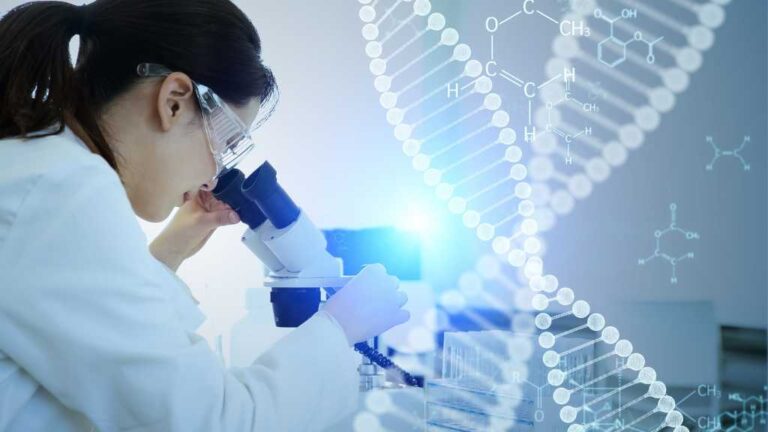Since the dawn of the autism diagnosis, humans have been trying to find an autism cure. The concept of a cure for autism is old-fashioned, formed before people understood it wasn’t a disease.
All studies conducted to find a cause that thoroughly explains the condition have failed. There are several reasons for this, including the complexity of the condition, the fact that every individual with autism is different, and the lack of understanding of the human brain.
It is essential to understand that there is no cure for autism because autism is not a disease. Instead, autism spectrum disorder (ASD) is a developmental condition that affects an individual’s social skills, communication, behavior, and ability to relate. It happens through differences in the brain’s development, which can result in a wide range of symptoms. These exist on a spectrum, from light behavioral challenges that are barely noticeable to severe setbacks that make life difficult. There is no cure for autism or a one-size-fits-all approach to treating the condition. Care and compassion are the only ways to manage it successfully.
At ABA Centers of Florida, we like to stay informed and updated with the science surrounding autism and its treatment. This article will cover everything you need to know about the research behind autism and the fallacy behind an autism cure.
1. What Causes Autism?
Assembling a complete theory of causation for autism and the entire spectrum of its behaviors is extremely difficult. Think for a moment of the behavioral range encompassed by the ASD diagnosis. A neurodivergent person might have trouble communicating, and another may be entirely non-verbal. Due to the complexities, no definitive or singular answer exists to what causes autism. Below are some of the more commonly cited reasons that can bring about the condition in children and newborns.
For starters, autism is highly heritable. Studies of twins have shown that genetic inheritance plays a large part in whether a child will be born on the spectrum. The heritability of ASD is anywhere from 60-90 percent. Genetic heritability will be the primary reason behind an autism diagnosis.
However, it is not as simple as saying that autism runs in the family. Sometimes, autism can manifest with no family history, which some scientists believe occurs due to a mutation in the father’s sperm or the mother’s eggs. Some evidence supports this theory; for example, the chances of having a child on the spectrum increase with the father’s age, meaning the sperm has had more time to mutate throughout a man’s life.
But it’s not all about genetics. Environmental factors can contribute a lot to causing autism. Many sources have been researched for the condition, from pesticides to plastics to metals like mercury and lead. Pre-natal factors such as diabetes, psychiatric drug use, and hypoxia (lack of oxygen) induced by sleep apnea during pregnancy could also play a part.
Finally, many have tried linking post-natal factors, such as vaccinations, gastrointestinal problems, and autoimmune disorders, causing autism in a child that would otherwise not have the condition. Evidence for these theories has been anecdotal, none verified, and some thrive off falsified or misunderstood information.
2. The Autism Cure
We discussed above why an autism cure is a fallacy. It is not a disease but a condition affecting many brain areas, and it has the potential for successful management with time and therapy. The very concept of a cure for autism is offensive to some people, as it may imply there is something that needs fixing.
We know autism occurs due to atypical brain development. Over 1000 genes interact in some way with autism, and that’s just the ones we know. Some of the genes that potentially interact with autism include:
- SHANK3: This gene is the leading candidate for close autism association. Located on chromosome 22, it codes for a protein that forms and maintains synapses (the connections between neurons in the brain). Mutations in it are associated with an increased risk of autism.
- NRXN1: This gene codes for a protein that is involved in the formation of synapses. Mutations in NRXN1 are associated with an increased risk of autism.
- CHD8: This gene helps to regulate gene expression and plays a role in brain development. Mutations in CHD8 have been associated with an increased risk of autism.
- TSC1 and TSC2: These genes are involved in the regulation of cell growth and division. Mutations in these genes can lead to Tuberous Sclerosis, a condition associated with an increased risk of autism.
- CNTNAP2: This gene is helps form synapses and develop language and communication skills. Mutations in CNTNAP2 result in an increased risk of autism and language impairments.
Genetic research is a new field, and although experts know the correlation between these genes and others with autism, what precisely that correlation is, how it manifests, and how changing one or another gene would alter development is unknown, not to mention the complication of accounting for environmental factors that may change gene expression. There is no autism cure, and although new research is getting closer and closer to understanding the roots of the condition, the magic pill for autism does not exist.
3. ABA Therapy as Treatment for Autism
While there is no cure for autism, the most effective therapy is Applied Behavior Analysis (ABA). ABA focuses on teaching individuals with autism new skills and behaviors that can help them in their relationships and career. ABA therapy involves breaking down skills and behaviors into small, manageable steps. The therapist then uses positive reinforcement to reward the individual for completing each step, which helps to reinforce the behavior and encourage the individual to continue to practice the skill.
ABA is the only therapy verified by extensive research and peer review. Studies have shown that ABA therapy can help improve communication, social skills, and behavior in individuals with autism while reducing challenging behaviors such as aggression and self-injury.
ABA Centers of Florida and Autism Treatment
No matter where your child is on the spectrum your child is, we are here to help give them the skills to excel. Our board-certified experts are trained in ABA methods and individualize all therapy to your and your child’s needs. With positive reinforcement and play therapy, your child can learn healthy coping mechanisms to make them happier, self-actualized, and prepared for adulthood.
For more information about what we offer, call (772) 773-1437 or reach out on our website and let’s work together toward a brighter, autism-friendly future.








